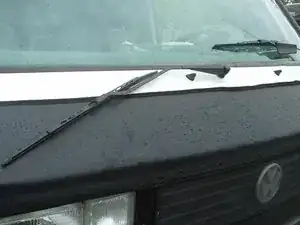
1980-1991 Vanagon Wiper System Overhaul
Es werden einige allgemeine Werkzeuge verwendet, um an diesem Gerät zu arbeiten. Du wirst nicht jedes Werkzeug für jeden Vorgang benötigen.
The Volkswagen Westfalia Camper was a conversion of the Volkswagen Type 2 (T3) sold between the early 1950s to 2003. The Volkswagen Type 2 (T3) was a three-door van or pickup with a rear-engine, rear-wheel-drive or four-wheel-drive layout. Volkswagen subcontracted the modifications of the Westfalia camper to Westfalia-Werke, which is headquartered in the Westfalia region of Germany.
Volkswagen Westfalia campers came standard with various foldout seat arrangements for sleeping, birch plywood interior panels, laminated plywood cabinetry, an icebox, a sink (in some models), water storage and pump, electrical hookups, curtains, screened Venetian blind windows, and a laminated folding table. Westfalia campers were also available with optional equipment including attached “pop up” tops with canvas or screen sides, awnings and side tents, a portable chemical toilet, a camping stove, and various camping equipment.
The Volkswagen Camper has become an icon in American and British culture as a symbol of surf and hippie culture that became popular in the mid-to-late 1960s.
VW vehicles include the VW emblem, which depicts a ‘V’ placed on top of a ‘W’, enclosed by a circle. M-codes are used to identify the VW Westfalia camper vehicle factory options. Starting in 1958, a metal plate was attached to the back of the camper’s right front seat that lists the date of manufacture, option codes, export destination, model number, paint finish, paint color codes, and the VIN or serial number.